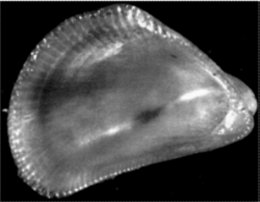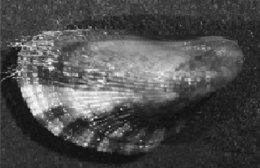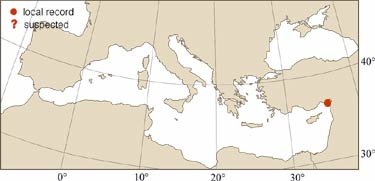

|
Relevant Synonyms
Misidentification
|
|
| photos: D. Çeviker |
|
SHORT
DESCRIPTION
color :
externally light green with orange pink spots. Internally, light green and pink tinted.
common size :
in Red Sea up to 11.5 mm (Dekker, pers. comm.); the Mediterranean specimen smaller (the biggest 9.5 x 5 mm). |
DISTINGUISHING CHARACTERISTICS
BIOLOGY / ECOLOGY
habitat :
attached by byssus to rocks and debris (corals, shells), lower shore and shallow water. The Mediterranean specimen was found attached to a Spondylus spinosus shell, at a depth of 40 m. |
|
1st
Mediterranean record
|

|
|
DISTRIBUTION
|
ESTABLISHMENT SUCCESS
speculated reasons for success :
|
|
|
MODE OF
INTRODUCTION |
IMPORTANCE TO
HUMANS |
|
KEY
REFERENCES
|
|
|
 Septifer bilocularis var forskali [Oliver, 1992]
Septifer bilocularis var forskali [Oliver, 1992]